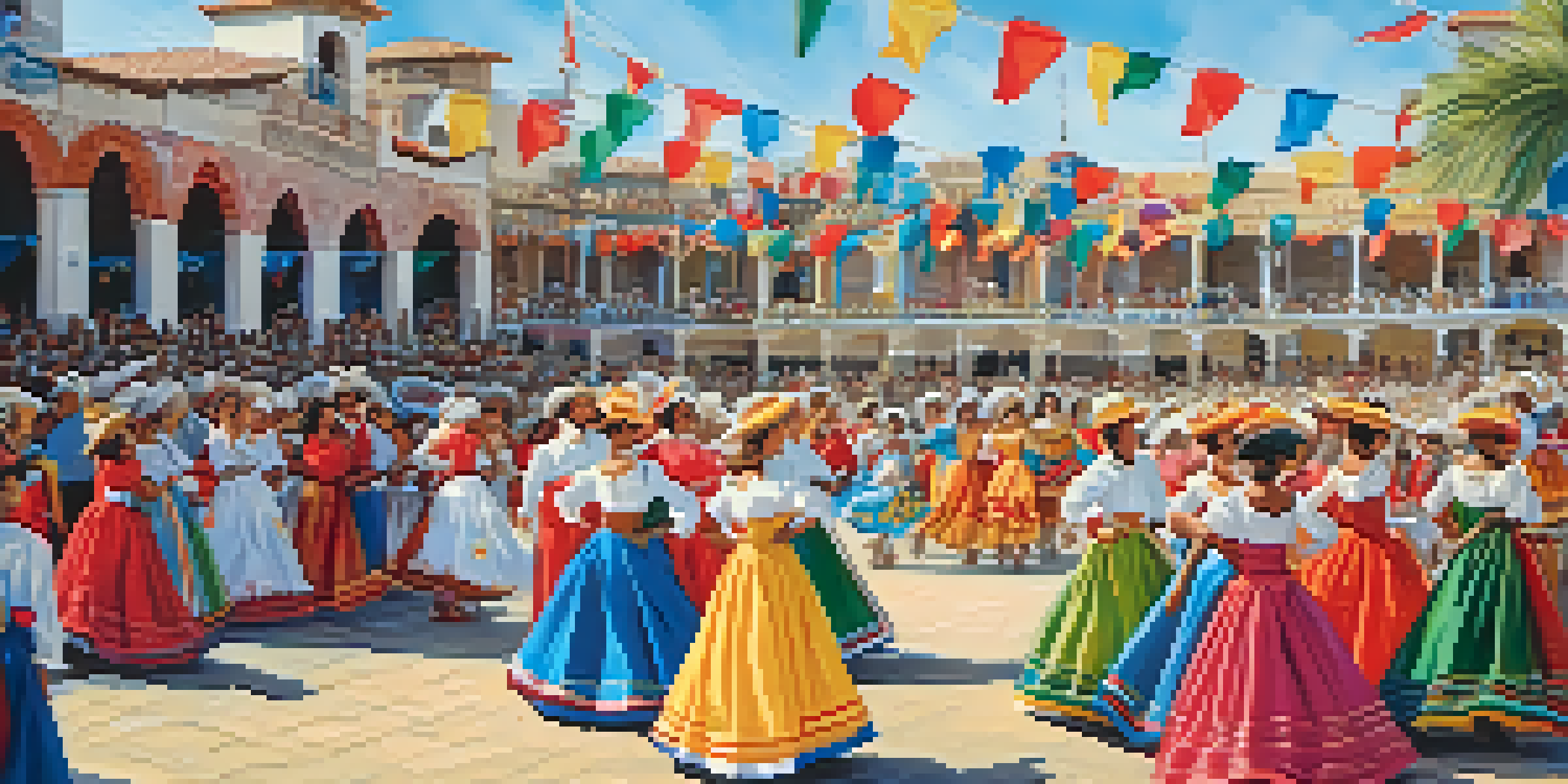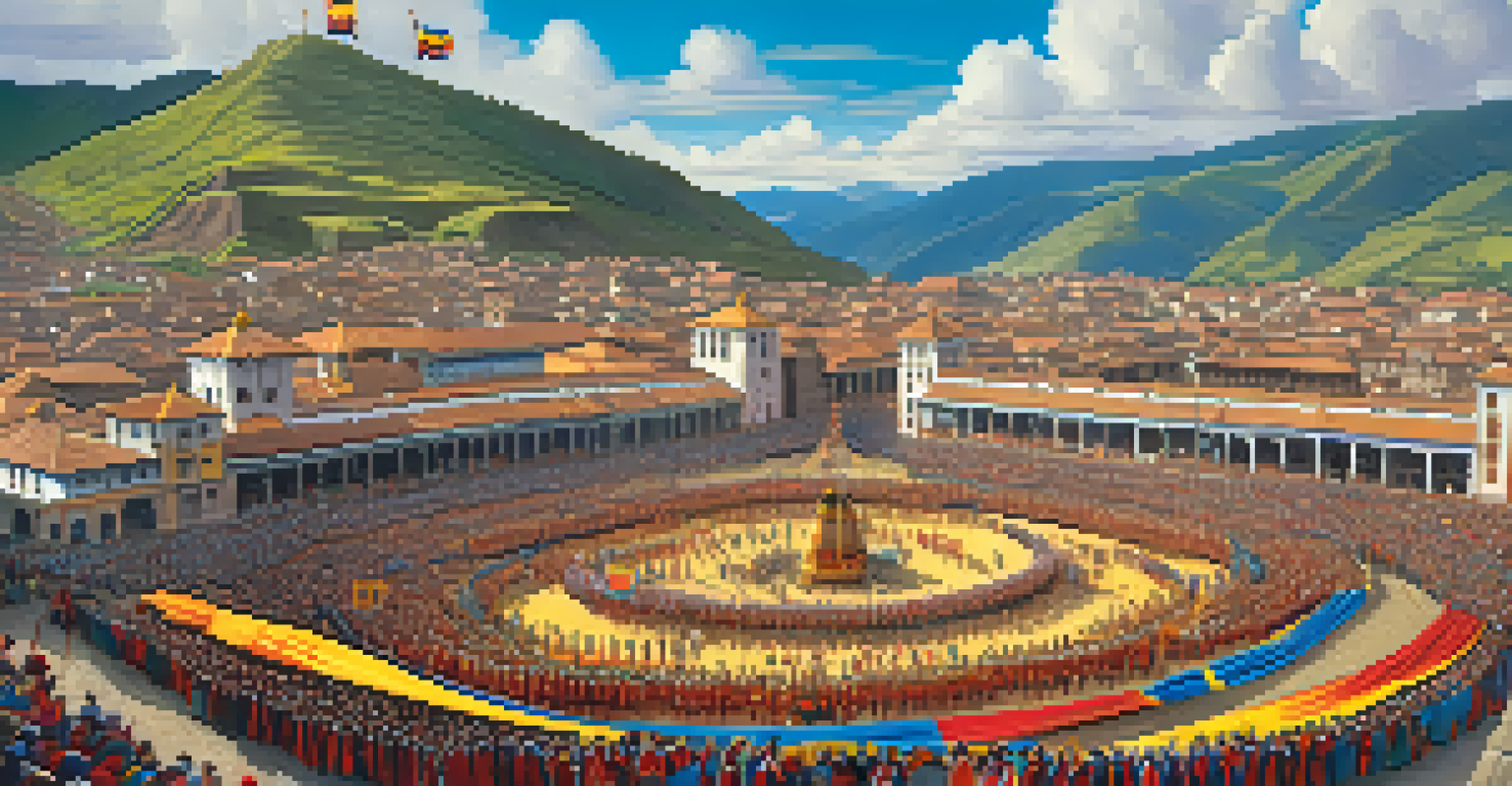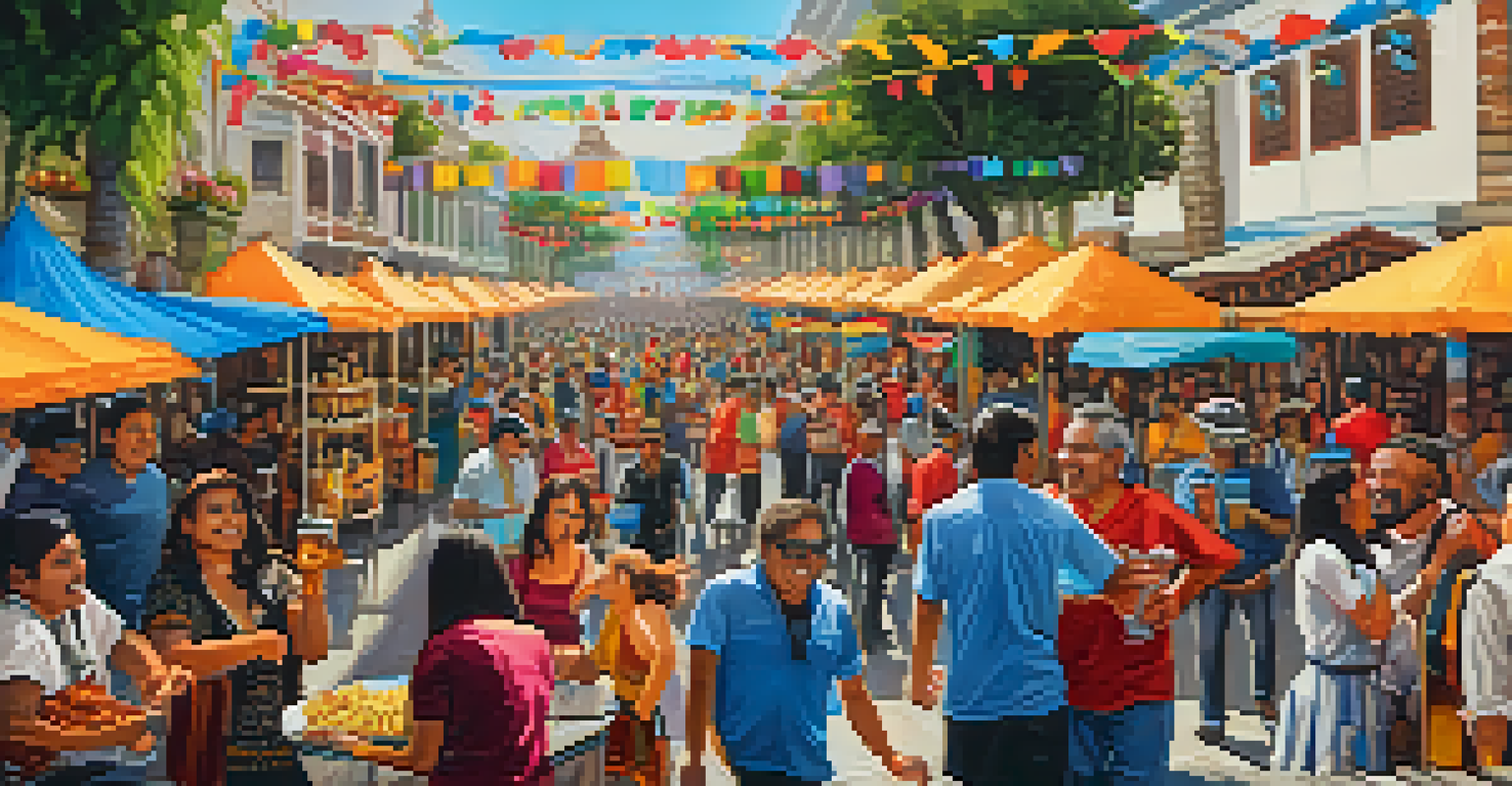A Traveler's Guide to Peru's Vibrant Music and Dance Festivals

Discovering the Heartbeat of Peru: Music Festivals
Peru is a country rich in history and culture, and its music festivals serve as a vibrant reflection of that heritage. Each festival offers a unique blend of traditional and contemporary sounds, drawing people from all walks of life. From the bustling streets of Lima to the serene landscapes of the Andes, the rhythm of Peru resonates deeply in its celebrations.
Music is the shorthand of emotion.
One of the most notable events is the Festival de la Cerveza Artesanal, held in Lima, where local bands perform while attendees enjoy artisanal beers. This festival not only showcases music but also highlights the rich flavors of Peru's craft beer scene. The atmosphere is electric, making it a must-visit for anyone who loves to dance and celebrate life.
Another significant festival is Inti Raymi, or the Festival of the Sun, celebrated in Cusco. This ancient Incan ceremony features elaborate costumes, traditional music, and dance performances that pay homage to the sun god. Attending this festival allows travelers to step back in time and experience the cultural significance of music in Peruvian society.
The Colorful Tapestry of Dance Festivals in Peru
Dance is an integral part of Peruvian culture, and its festivals showcase a dazzling array of styles and traditions. Each region in Peru has its own unique dance forms, often tied to local customs and historical narratives. Festivals dedicated to dance allow visitors to witness the passion and artistry of Peruvian performers firsthand.

For instance, the Festival de la Marinera, held in Trujillo, celebrates the coastal dance known as Marinera, characterized by graceful movements and colorful costumes. This festival not only features competitions but also workshops for those eager to learn the steps. It's a fantastic opportunity for travelers to engage with local culture and perhaps even join in the dance.
Peru's Festivals Celebrate Culture
Music and dance festivals in Peru showcase the country's rich cultural heritage, blending traditional and contemporary art forms.
In the highlands, the Puno Festival celebrates the traditional dances of the Andes, presenting a captivating mix of music, costumes, and rituals. The vibrant outfits and rhythmic footwork bring the streets alive and create an infectious energy. Participating in this festival is like being swept into a lively story, one that paints a vivid picture of Peru's diverse cultural landscape.
Experiencing Local Culture Through Food and Music
Peru's music and dance festivals are not just about the performances; they also offer a feast for the senses, particularly when it comes to food. Many festivals feature local culinary delights that reflect the flavors of the region. From street vendors to gourmet food stalls, there’s something to satisfy every palate.
Dance is the hidden language of the soul.
At the Festival de la Cerveza Artesanal, for example, you can enjoy ceviche paired with local craft beers, enhancing the overall experience. The combination of delicious food and lively music creates an atmosphere that encourages socializing and celebration. It's a chance to connect with locals and other travelers over shared tastes and rhythms.
Moreover, many festivals include cooking demonstrations, allowing attendees to learn how to make traditional dishes. This not only enriches your understanding of Peruvian cuisine but also creates lasting memories, as you can take home a piece of Peru through its flavors and culinary techniques.
The Role of Music in Peruvian Identity
Music in Peru is more than just entertainment; it plays a pivotal role in shaping national identity. The diverse sounds—from Andean flutes to Afro-Peruvian rhythms—reflect the country's rich history and cultural influences. Festivals serve as a platform for artists to showcase their talents while preserving traditional sounds.
For example, the Festival Internacional de la Música Criolla in Lima celebrates Afro-Peruvian music, emphasizing its significance in the country's cultural landscape. Attendees can enjoy performances by renowned artists who breathe life into traditional genres. This festival is a powerful reminder of how music can unite people and evoke shared emotions.
Food Enhances Festival Experiences
Local culinary delights featured at festivals provide a sensory feast, allowing attendees to connect with Peruvian culture through its flavors.
Through these festivals, travelers gain insight into how music weaves through the fabric of Peruvian life. It’s a celebration of resilience, joy, and community, allowing both locals and visitors to bond over a shared appreciation for the art form.
Festivals for Every Season: When to Visit Peru
Timing your visit to coincide with one of Peru's many music and dance festivals can enhance your travel experience significantly. Each festival typically falls within a specific season, reflecting the agricultural calendar or cultural traditions. Whether you’re planning a summer getaway or a winter retreat, there’s a festival waiting for you.
For instance, the Inti Raymi festival takes place in June, aligning with the winter solstice in the Southern Hemisphere. This vibrant celebration attracts thousands, making it a lively time to be in Cusco. On the other hand, the Festival de la Marinera happens in January, offering a warm summer experience filled with dance and camaraderie.
By researching the festival calendar, you can tailor your trip to immerse yourself in the local culture. Attending these events is not just about watching; it’s about engaging with the community and experiencing Peru's cultural richness firsthand.
Practical Tips for Enjoying Peru's Festivals
Planning your visit to Peru's music and dance festivals can be both exciting and overwhelming. To make the most of your experience, start by booking accommodations early, especially during peak festival times. Popular cities like Lima and Cusco can fill up quickly, so securing a place to stay will ensure a stress-free trip.
Additionally, familiarize yourself with the local customs and etiquette surrounding the festivals. Understanding the significance of each celebration will enrich your experience and help you connect with locals. For example, it’s customary to greet performers and fellow festival-goers with a smile and a friendly attitude.
Community Spirit at Festivals
Peru's music and dance festivals foster a sense of community, bringing together locals and travelers to celebrate shared traditions and create lasting memories.
Lastly, don’t forget to bring your camera! The stunning costumes, energetic performances, and vibrant atmosphere provide incredible photo opportunities. Capturing these moments will allow you to relive the magic of Peru's festivals long after your journey has ended.
Embracing the Spirit of Community at Festivals
One of the most beautiful aspects of Peru's music and dance festivals is the sense of community they foster. People from diverse backgrounds come together to celebrate, share stories, and create lasting memories. It’s not uncommon to see families, friends, and travelers alike dancing side by side, united by the rhythm of the music.
These festivals also emphasize the importance of tradition and cultural preservation. Many local communities take pride in showcasing their heritage through music and dance, ensuring that these art forms continue to thrive. As a traveler, participating in these celebrations allows you to contribute to this cultural exchange.

Ultimately, the festivals in Peru are a reminder of the power of music and dance to bring people together. Embracing this spirit of community can lead to meaningful connections that transcend borders, making your travel experience all the more enriching.